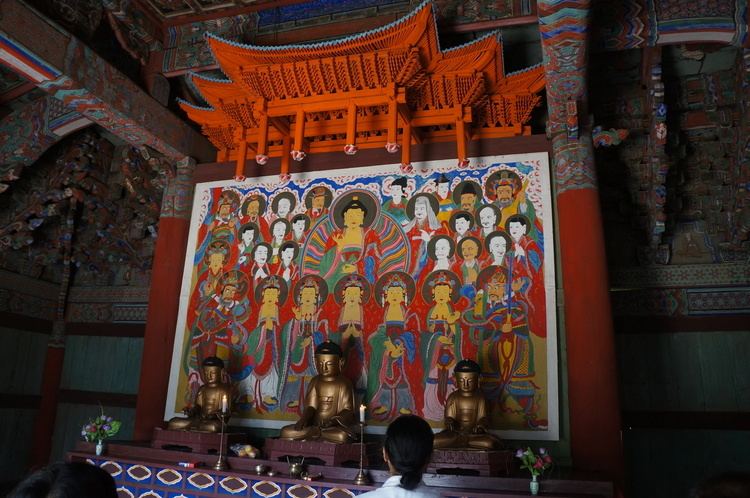Kanji 表訓寺 Romanization Hyōkun-ji Hancha 表訓寺 | Hiragana ひょうくんじ Chosŏn'gŭl 표훈사 Revised Romanization Pyohunsa | |
 | ||
Similar Singyesa, Sogwangsa, Mount Kumgang, Songbulsa, Pohyonsa | ||
P'yohun-sa is a Korean Buddhist temple located on Mount Kumgang, North Korea. Founded in the 7th century under the kingdom of Silla, it is the only one of Mount Kumgang's four great temples to have survived the Korean War. It is listed as National Treasure #97 in that country.
History
Pyohunsa was founded in 670 under the fervently Buddhist kingdom of Silla, who viewed the Kumgang mountains as sacred. Enlarged over the years, it underwent many successive restoration, including one in 1778. Eventually it became known as one of the Four Great Temples of Mount Kumgang, along with Changansa, Singyesa and Yujomsa. Pilgrims were soon flocking to the temple, and eventually, it financed the construction of the smaller Chongyang Temple further up the mountain to accommodate the excess.
During Japanese rule over the Korean peninsula, Mount Kumgang became a major tourist site, and the temple (known by its Japanese pronunciation as Hyōkun-ji) received many visitors to admire its beautiful setting and architecture. Because of this, it underwent significant restoration work funded by this Japanese government during this time.
Pyohunsa was the only one of the four great temples of Mount Kumgang to survive the Korean War. The others were completely destroyed by US bombings of the area, though Singyesa has since been rebuilt. Today, it is still a major point of interest for any visitor to Mount Kumgang.
In the temple's cemetery stands the Stupa of the Venerable Sosan, a Buddhist hermit who organized bands of monks to fight back the invading armies of Japanese warlord Toyotomi Hideyoshi during the Imjin Wars. The stupa is listed as Cultural asset #306.
